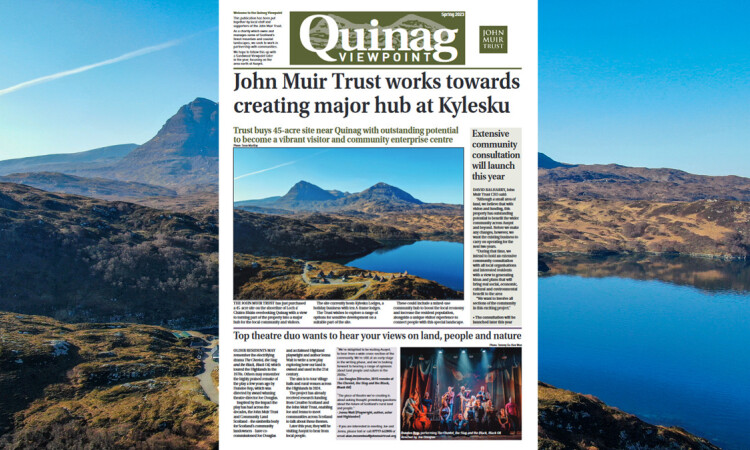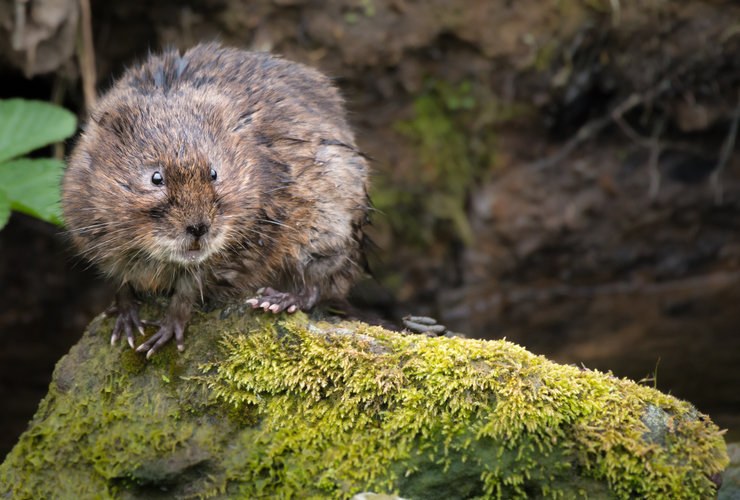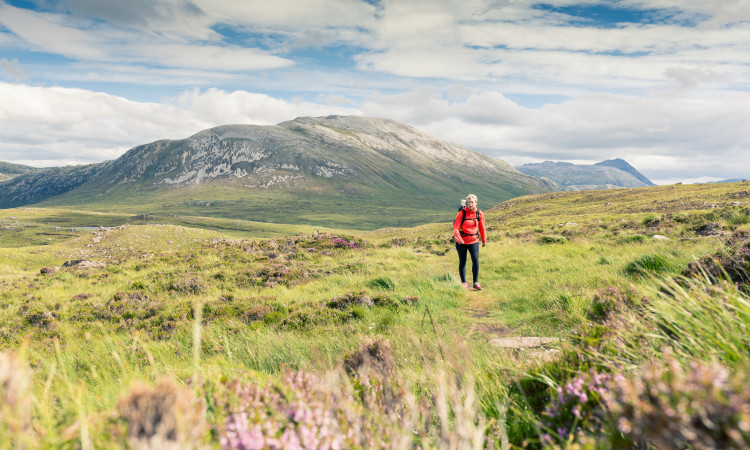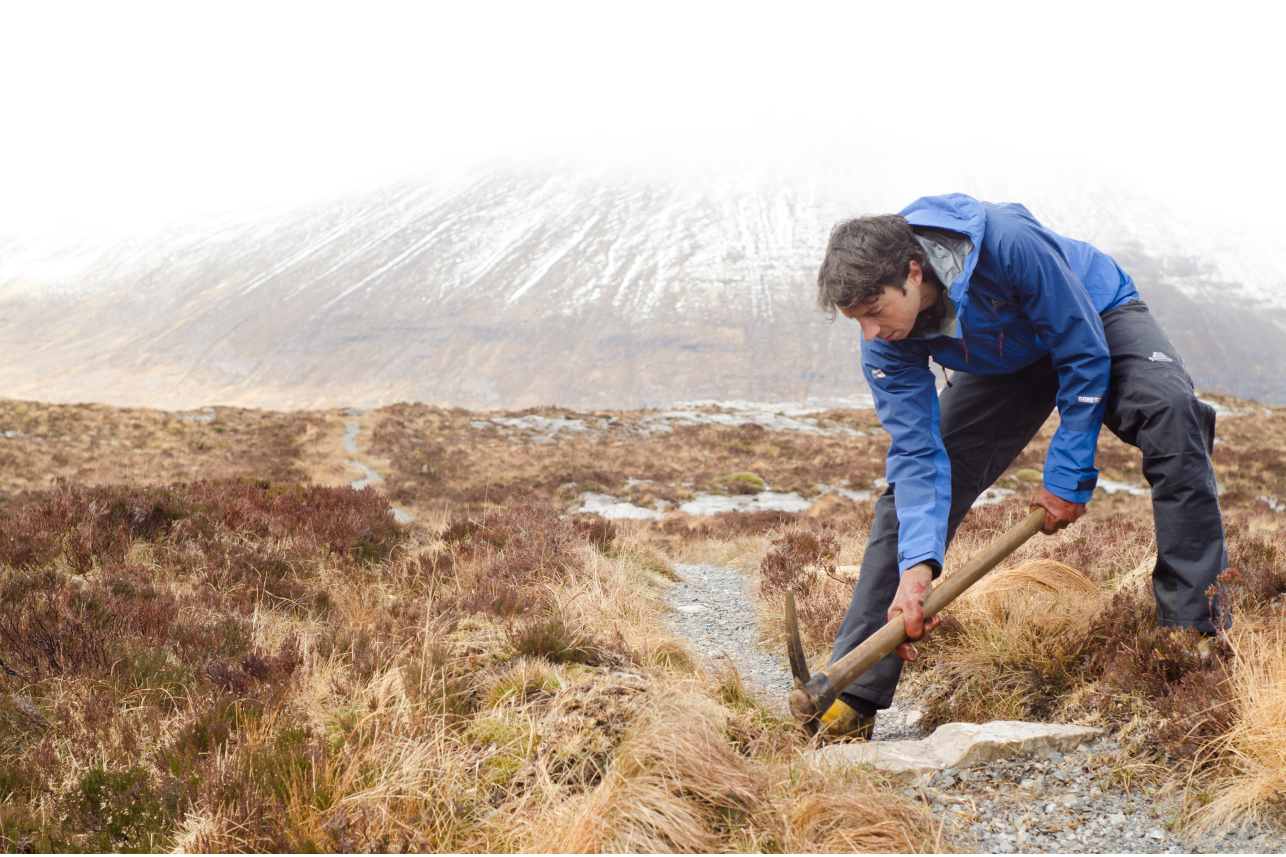Quinag
A breathtaking mountain range in amazing Assynt featuring precious remnants of ancient oak woodland.
Quinag covers 3,699 hectares (equivalent to 5,180 football pitches) of the Assynt–Coigach National Scenic Area in Sutherland. Quinag is an anglicisation of its Gaelic name, A’ Chuinneag (meaning the milk pail). It’s not a single mountain but a dramatic range of peaks.
Sàil Gharbh means the rough heel, Sàil Ghorm the blue heel, and Spidean Coinich is the mossy peak. These are three of Scotland’s most northern Corbetts (hills over 2,500ft). The open hillsides here are a mosaic of heather moorland, grassy slopes and peat bogs. Remnants of ancient woodland comprising birch, rowan, hazel, wych elm, aspen and oak are scattered throughout the northern side of Quinag particularly in the deep gulleys.
Quinag was part of the ambitious Coigach and Assynt Living Landscape project. This aimed to reconnect woodlands and other fragmented habitats to enable missing species to return.
What we're doing
The John Muir Trust is working to protect the integrity of the wild landscape at Quinag – the sweeping mountain ridges, mountain views, quiet corries, tumbling burns and vibrant woodlands – for people to enjoy and for the benefit of the wildlife it supports. We maintain the mountain path to the summits and work to restore deer populations to levels that the land can sustain.
Pathwork
Through our Wild Ways programme, the Trust maintains the mountain path up Quinag. This enables access to the summits and their stunning views over the peaks and lochans of Sutherland, and beyond. Our skilled path team helps prevent damage to fragile habitats and the wider landscape without being intrusive.
Deer management
Many habitats on Quinag, particularly native woodland, have declined and disappeared. This is due to centuries of heather burning, overgrazing by sheep and an unsustainable rise in deer numbers. We’re working to reverse this decline and encourage nature to develop a rich variety of wild landscapes and habitat. This is particularly important for saving the ancient Ardvar Woodlands on the north side of Quinag. Deer are an essential part of the ecosystem but their high numbers are preventing young trees from growing here.

Wildlife on Quinag
There’s a thriving population of water voles at Quinag, the subject of important study by Aberdeen University for the past 20 years. We also record butterflies, from the small pearl bordered fritillary to the large heath, and an abundance of magpie moths. Pools and bogs contain many frogs, toads and newts, and a shy adder or slow worm might be seen basking on a rock on warm days.
Other wildlife at Quinag includes badger, fox, pine marten, blue hare and nesting birds such as greenshank and golden plover. Up high, it's possible to glimpse golden eagle, ptarmigan and ring ouzel, while on the shoreline sightings of seals and dolphins are common.
We're working with local wildlife group Assynt Field Club to grow community knowledge and understanding of the flora and fauna in this wonderful place.


Exploring Quinag
Assynt is a hill walker's paradise, with Quinag one of the most popular mountains. From Kylesku Bridge, you can see the two great northern buttresses of Sàil Mhor and Sàil Ghorm. From the foot of Loch Assynt, its cliff-lined flanks fill the horizon, and from the loch head at Inchnadamph its three tops rise above spacious moorland, with Ardvreck Castle in the foreground. The summits offer stunning vistas of wild Scotland, looking west across the Minch to the Isle of Lewis and north to the mountains of north-west Sutherland.
Quinag lies within the North West Highlands Geopark, Scotland’s first Geopark, due to the area's striking and ancient geology. The base of Quinag around the shore of Loch Assynt was formed of Lewisian Gneiss rock three billion years ago.
- Please be sure to follow the Scottish Outdoor Access Code if you are visiting.
Looking for somewhere to stay near Quinag?
Support the work of the Trust by staying in one of our stunning lodges at Kylesku.
Book for Kylesku Lodges
The John Muir Trust’s woodland restoration at Quinag: an update - 22nd December 2022
Reducing deer density is essential for woodland restoration at Quinag and we have applied for and been granted authorisations from NatureScot for culling deer until the end of March and at night.
Our objective is to allow recovery of the remnant woodlands on Quinag. On the south side there is an ancient holly grove spreading across the lower slopes (Doire Cuilinn). Almost invisible from the road, it also contains vulnerable populations of other tree species, all struggling to survive. On the north side there are downy birch woodlands with rowan, wych elm, aspen, oak, and hazel, which are part of a larger Site of Special Scientific Interest and a Special Area of Conservation; these also continue to suffer browsing damage from deer. As the deer move back and forth between these two areas, reducing the deer population and their impacts across Quinag is essential for the survival and recovery of these woodlands.
After over a decade participating in the Assynt Peninsula Sub Group (APSG) and the wider West Sutherland Deer Management group, there has been little progress and these fragile woodlands at Quinag continue to suffer damage as a result. Deer densities in the area remain above the historical targets set by the APSG, and significantly above the densities that would enable these woodlands to recover.
We feel the time is right for a different approach. We have withdrawn our voluntary membership of the APSG, until such time as we can be assured it can work in a way that recognises legitimate management objectives, land-owning rights and responsibilities, and the rights of staff to work with others in a respectful environment. The Trust will continue to share plans and actions on deer management locally and with the Chair of the ASPG.
To find out more about the Trust’s approach to deer management please read our leaflet.

